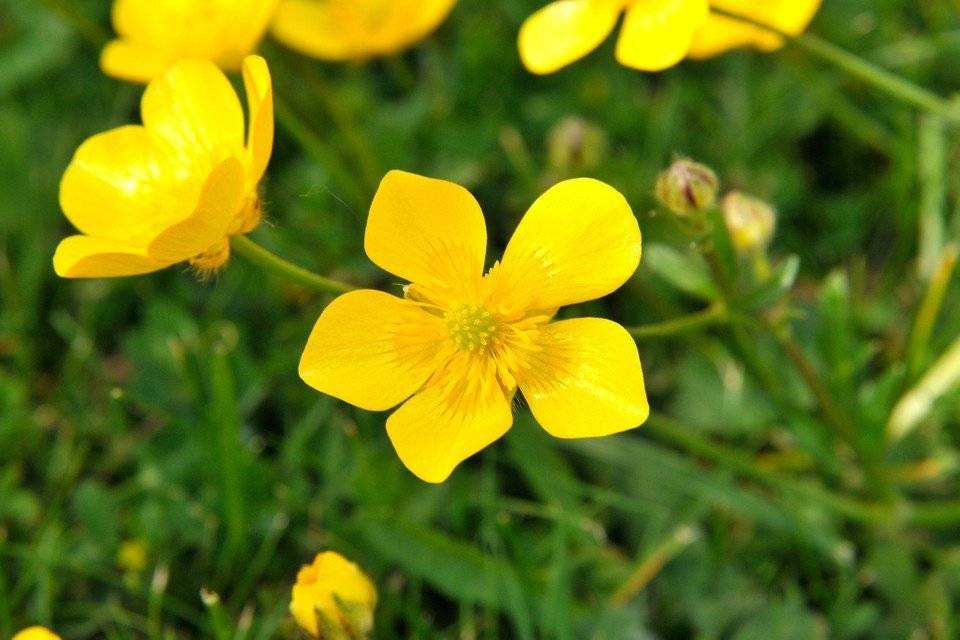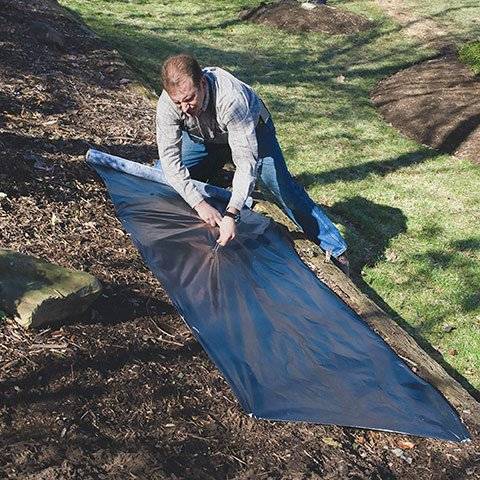Beautiful Plants For Your Interior
Creeping Buttercup

Quick Weed Facts:
Shape: Three-lobed serrated leaves are grooved, dark green and grow out of a central node.
Colour: Flower Golden Yellow
Family: Ranunculaceae Genus: Ranunculus
Main Species: Creeping Buttercup (Ranunculus repens)
Other Names: Creeping Crows Foot, Sitfast, Butter Daisey
Most Active Growing: May through to August
Weed Type: Perennial
Creeping Buttercup Identification
Creeping buttercups (Ranunculus repens) flower from late May to late August on stems standing 20 inches (50 cm) high. Creeping Buttercup produces golden-yellow buttercup-like flowers with five glossy petals. Because not all creeping buttercups flower, therefore identification is most frequently detected through their leaves.
The Creeping Buttercup’s leaves are dark green and have a central node. The leaves are divided into three lobes and have grooves. They may be quite diverse in shape, with some having ‘pointed tips’ and others having ’rounded tips’. The ‘unique pale spots’ on the leaves are dispersed in a seemingly ‘random’ manner and are what makes creeping buttercups so distinctive.
Creeping Buttercup (Ranunculus repens) is generally found on beds & borders, lawns, gravel paths and waste or uncultivated land, especially if the soil is heavy clay or poorly drained. It will grow as well in sunny or shady locations.

Easily Identify Creeping Buttercup by the Unique Pale Spots on its Leaves
How is Creeping Buttercup Spread
A creeping buttercup infestation can be particularly tough to eliminate in poorly drained soil, where it may quickly smother grass in lawns and plants in beds and borders. It may also deplete the land of ‘potassium’ and thus may cause what is known as an allelopathic effect. This effect may negatively affect any adjacent plants.
Creeping buttercup is spread by ‘hardy’ seeds with each flower producing around 20-30 seeds, this could become several hundred on a flowering plant. Seeds are unaffected by frost as some seeds can lay dormant for some time, several years in fact.
In addition, rooting stems spread across the ground and develop into tough anchoring roots in several places, as it sends out runners that creep across the surface of the lawn/soil. Small nodal sections of stems, if severed and scattered when roots are beginning to form, may become well established in moist conditions.
Creeping Buttercup is a Perennial Plant That Spreads Via Long Runners With Strong White, Deeply Penetrating Roots And Seeds.
Controlling Creeping Buttercup
As with any type of weed or plant that causes you a problem in the garden, it’s crucial to eliminate creeping buttercup before it becomes firmly rooted.
To try and completely eradicate this plant, start by pulling out as much of it as you can, including the ‘creeping runners’ and roots. The roots are tough though and can penetrate deep into the ground, so be prepared for a tough job.
Organic Control
As mentioned above the most effective organic control of Ranunculus repens is early detection and removal manually.
Besides the traditional weedkillers, there are a variety of environmentally friendly solutions one can employ to eradicate many weeds found in the garden.
If creeping buttercup appears on your lawn, for instance, try cutting the ‘developing’ runners with a wire-toothed rake before mowing the lawn to avoid cutting them with the mower. Then improve your lawn drainage by ‘aerating’ in the autumn. Remember good soil drainage is key to helping eradicate this plant.
Creeping Buttercup can also present itself in flower beds and borders. Try removing young creeping buttercup plants and their runners with a trowel in spring. Repeated hoeing through the season will help eliminate this weed. Multiple sessions are required to fully control it though
However, if large infestations are present, you may have to lift some plants, remove any unwanted parts of the weeds, and keep the ‘clean plants’ in the weed-free ground while eradicating the ‘infested’ border over the summer using the same method prescribed for bare soils.
For bare soils or uncultivated lands, creeping buttercup can be killed by digging and hoeing continually, another alternative is to place a sheet of black plastic mulch or membrane over the area to smother this weed. Covering the soil with the weed-control membrane (landscape fabric) or thick black polythene will prevent light from reaching the plants, resulting in their starvation and death.
Alternatively, organic matter, such as bark mulch, can be used to suppress or eradicate plant growth. For mulches to function properly though, they should be at least 5cm (2in) thick, although 7.5cm (3in) deep is preferable. The sheet/s or mulch should be kept in place throughout the summer or even longer if possible to fully eradicate the plants.

Cover the bare ground in a ‘landscape fabric’ to help suppress creeping buttercups.
Weedkillers
As with organic control, the use of weedkillers can vary depending on where your infestation of the weed is located. The creeping buttercup is one of the most difficult weeds to battle on the lawn. It can, however, be managed using a number of lawn weedkillers like Resolva Lawn Weedkiller Extra or similar. Apply the weedkiller in spring when the growth is most active, repeated applications may be required though.
Creeping buttercups can also be a problem in borders. It can be controlled by glyphosate-based weedkillers like Doff Advance Weedkiller or similar. However, since ‘glyphosate’ is not selective, it is critical to avoid spray or ‘spray drift’ from coming into contact with any garden plants.
If you are treating the weeds near garden plants, spray carefully in cool, calm weather. It would be best to peg any branches or plants back with canes and or cover them with a canopy while spraying, but make sure that the creeping buttercup plants are completely dry before releasing the branches or removing the cover.
Spraying on bare soil and or uncultivated land, it’s advisable to use the same method as given above for borders. Ensure you spray during the spring or summer for best results.
FAQs
Is Creeping Buttercup Poisonous to Dogs?
There are many ‘Ranunculus’ plants found throughout the United Kingdom. Buttercups, a Ranunculus family member, are often found in overgrazed pastures, meadows, and fields.
When crushed or chewed, the plants produce ‘ranunculin’, a toxic chemical that becomes protoanemonin. Protoanemonin, a poisonous oil that irritates the gastrointestinal tract and mucous membranes, is created when protoanemonin is produced. Horses, cats, and dogs are all irritated by its bitter taste in addition to being poisonous.
Is Creeping Buttercup Good for Bees?
Many microorganisms, viruses, insects, and nematodes are known to infest creeping buttercup plants. However, as the toxic substance is present only in the sap, and since bees consume only nectar and pollen, they are not negatively impacted by the plant’s toxic chemical.
Conclusion
Creeping Buttercup is a perennial weed that’s most often found in the garden or as a weed on your lawn. It’s a member of the buttercup family (Ranunculaceae).
Creeping Buttercup (Ranunculus repens) is however one of the most difficult weeds to eradicate from lawns and borders. It can, however, be successfully managed in several ways both organically and with a herbicide.
Once rooted, the creeping buttercup can be a highly invasive plant and spread over a wide area.
Check your garden regularly for signs of common UK weeds to ensure they do not become bigger problems than they need to be.
Don’t forget to visit our FAQ page for many more gardening tips, tricks and information on a whole host of subjects for the home and garden.
